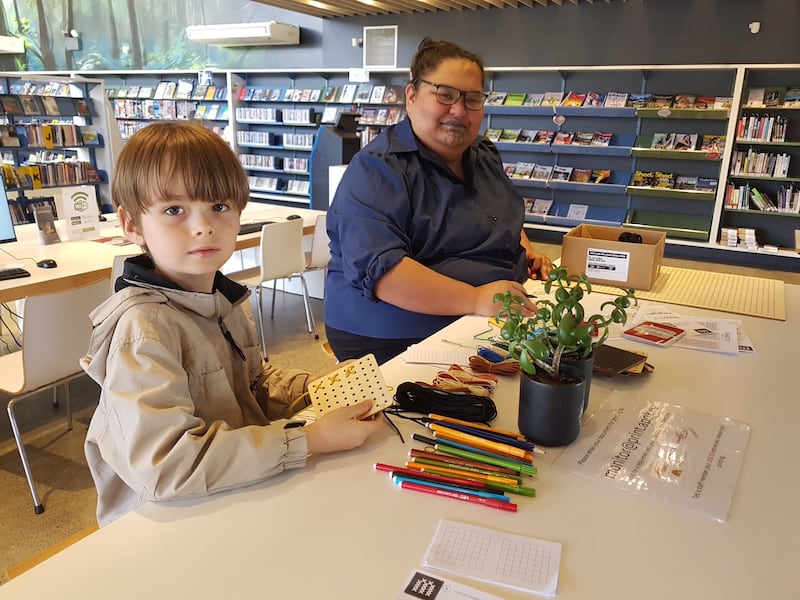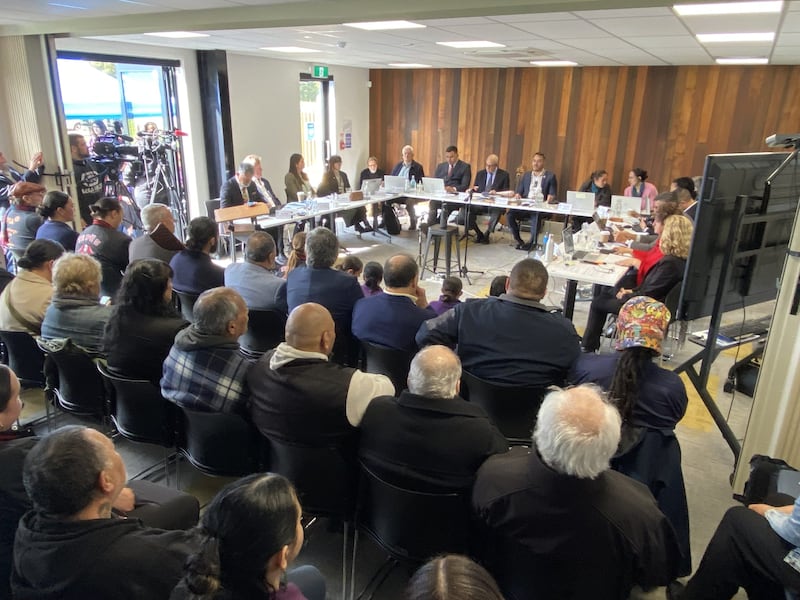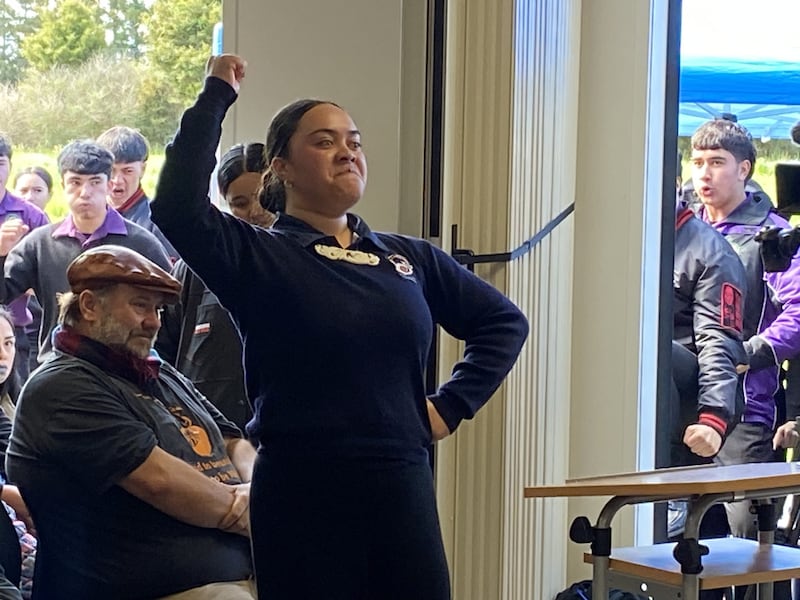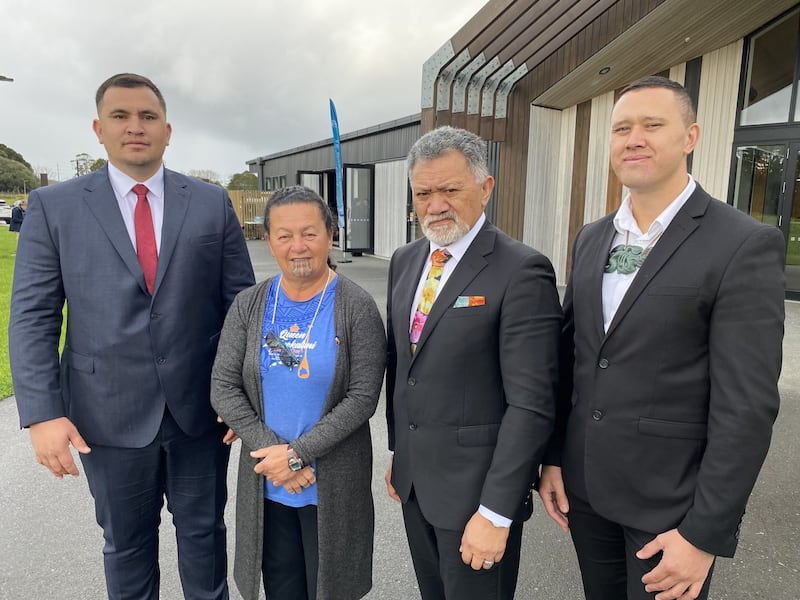New Zealand’s likely first almost full te reo Māori council meeting held near Kaikohe in the Far North in early September is heralding ongoing growth in the language’s use.
The meeting, held near Kaikohe on the eve of Te Wiki o te Reo Māori - Māori Language Week, was a first for the council.
Eighty per cent of the three-hour marae-style September 6 Māori ward decision meeting was in te reo Māori, a Far North District Council (FNDC) record.

Mayor Moko Tepania said te reo Māori was commonly used in council meetings, to differing degrees, in part related to the matters being considered.
But the language had not been spoken to the much greater degree used at the early September meeting before.
Tepania, who is also Local Government New Zealand’s Northland board member, said conducting this meeting largely in te reo was fitting for the meeting where a number of kaumatua and leaders from the Far North’s 12 iwi and hapū were present as the council formally voted to keep its Ngā Tai o Tokerau Māori Ward for next year’s local elections in the face of new government legislation.
The meeting mixed New Zealand’s typical local government meeting conduct protocol with Māori tikanga and te reo Māori throughout.
Far North iwi leaders spoke, each of their korero followed with a waiata. Haka was also part of the day. Students from Te Kura Kaupapa Māori o Kaikohe where Far North Mayor Moko Tepania previously taught te reo Māori, were among about 150 people at the livestreamed meeting, their waiata and haka part of the growing use of te reo and tikanga in and around the council.
More than half of FNDC’s councillors are fluent te reo Māori speakers.
Seventy per cent of the council’s 11 politicians are Māori.
Te reo Maori and tikanga Māori was important, Tepania said.
Te Wiki o te Re Māori - Māori Language Week offered valuable opportunities for all New Zealanders to grow further into the taonga.
“It offers valuable opportunities for the council, Far Northerners and all New Zealanders to grow further in the language at whatever level that are at, or wherever they’re from,” Tepania said.

The theme of this year’s celebration of te reo Māori is ‘Ake, Ake, Ake – A Forever Language’, which was chosen to represent the resilience, adaptability and endurance of te reo Māori when it is ‘under enduring pressure’.
A te reo Māori to English interpreter worked during the meeting, providing translation via provided earplugs.
Tepania said at the start of the meeting there were enough earpieces for councillors and media present.
Others who needed to know what was being said could sit beside someone in the packed public gallery.
“We had to do the best we could with what we have,” Tepania said.
Tepania has a Master of Education with First Class Honours.
His Master of Education dissertation focused on using maramataka, the Māori lunar calendar for learning te reo Māori in education. This followed a Bachelor of Teaching (Secondary) and a Bachelor of Arts in Te Reo Māori.

Tepania started learning te reo Māori 20 years ago. He chose te reo Māori as a subject at Whangārei’s Pompallier Catholic College, rather than French, because food was provided in class.
He said the increasing use of te reo Māori and tikanga across the council was about honouring the principles of Te Tiriti o Waitangi, in line with the Local Government Act requirements.
FNDC has a two-year goal of all its staff having been through introductory te reo lessons by October 2025.
It has recently appointed its first in-house te reo Māori and tikanga specialist to assist.
The council now has formal policies for boosting te reo and tikanga at the council. It also has a Māori framework for its council operations.
Te Pae o Uta Te Ao Māori framework is named after an incantation used by Ngāpuhi chief Nukutawhiti, the grandson of Kupe who upon arriving into the Far North’s Hokianga Harbour on the waka Ngātokimatawhaorua.
The name links to calming the waters across Hokianga Habour bar to make it ashore.
“The seas were very rough. Nukutawhiti called to the seas, calming them, so he could make it over the bar,” Tepania said.
The council’s next Te Kuaka - Te Ao Māori committee meeting will see the development of a formal implementation plan to concrete further embedding te reo Māori and tikanga across the council.
The council’s February name change ahead of Waitangi Day is one example of building this approach.

The council has also developed te reo Māori words for some of the typical jargon words for council’s functions.
FNDC is again celebrating Maori language week, this year across its six libraries - commemorating the anniversary of the Māori language petition Te Petihana Reo Māori during the week. The petition was presented to Parliament in 1972. Te reo Māori became an official language of Aotearoa in 1987.
The Kotahi rau kupu i te reo Māori competition focuses on find the 100 te reo Māori kupu (words) hidden around each of FNDC’s Kawakawa, Kaikohe, Paihia, Kāeo, Kaitāia and Kerikeri libraries. Participants go into a winning draw to after locating 50 of the hidden kupu.
There are also ngā tākaro rā (game days) playing reo Māori games that will be added to the libraries’ toibox collections; Tukutuku Toi Māori sessions, (people learning to tell their stories through this traditional art form); kapu tī kōrero (cuppa and conversations in reo Māori); after-school sessions including Te Wiki o te Reo Māori storytime and chances to tākaro (play), ako (learn) and kōrero reo Māori (speak), waiata (sing), kanikani (dance), whakarongo (listen) and me pānui (read) in this way.
Tepania said te reo Māori was particularly important in the Far North where just over half the population identified as Māori.
He said a lot of Northlanders were already passive te reo speakers.
This meant they were comfortable with te reo Māori and could roughly follow what was being talked about, without necessarily being able to understand every spoken word or speak it themselves.
While still a councillor Tepania became what is thought to be the first councillor in New Zealand to speak te reo Māori only throughout a whole council meeting.

This followed him tabling what was thought to be New Zealand’s first fully te reo Māori council agenda report.
Tepania said using te reo and tikanga was particularly important for young people coming up through the system.
More than 70% of the Far North’s young people are Māori.
Providing opportunities for them to see and hear the language was about honouring the words of national icon and Far North matriarch Dame Whina Cooper.
Tiakina wā tātou tamariki, tiakina ngā mea ka kitea, ngā mea ka rangona, ngā mea ka kitea. Ko te tupu o ngā tamariki tērā anō te tupu o Aotearoa.
Take care of our children, take care of what they see, take care of what they hear, take care of what they see. For how the children grow so will be the shape of Aotearoa.
Tepania said learning te reo was great for the young people of the Far North, which could take them anywhere.
It was a main language in Aotearoa.
“We need to treasure and embrace it. Te reo can take you anywhere.”
Local Democracy Reporting is local body journalism funded by RNZ and NZ On Air
